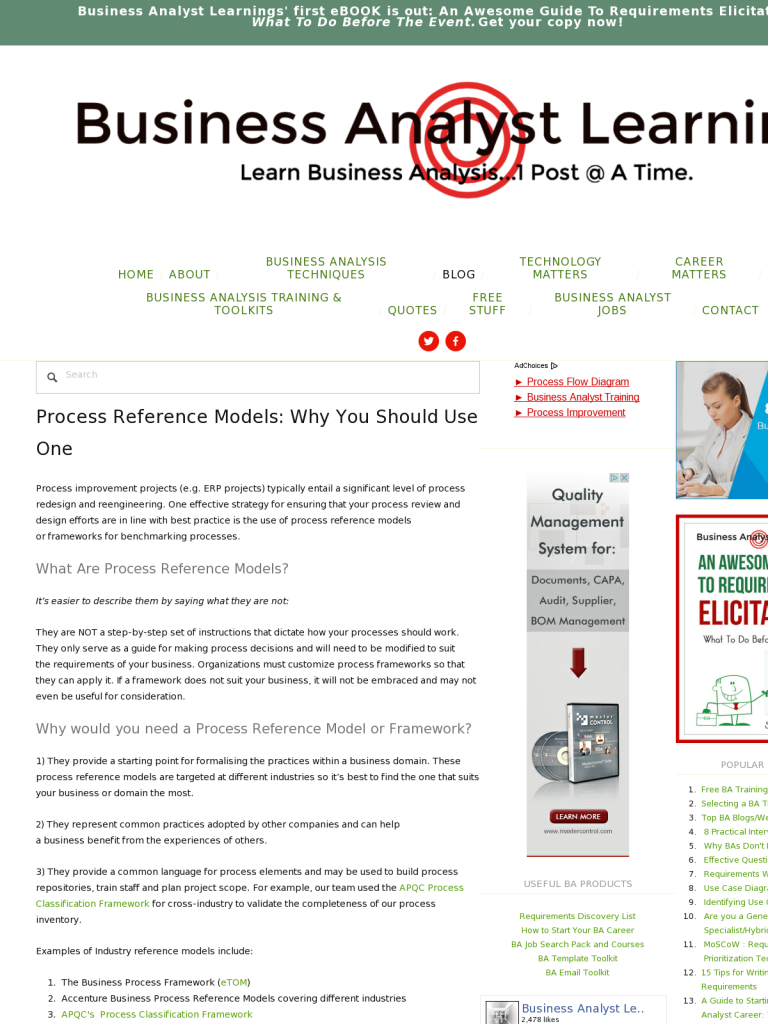Process Reference Models: Why You Should Use One
Blog: Business Analyst Learnings Blog
Process improvement projects (e.g. ERP projects) typically entail a significant level of process redesign and reengineering. One effective strategy for ensuring that your process review and design efforts are in line with best practice is the use of process reference models or frameworks for benchmarking processes.
What Are Process Reference Models?
It’s easier to describe them by saying what they are not:
They are NOT a step-by-step set of instructions that dictate how your processes should work. They only serve as a guide for making process decisions and will need to be modified to suit the requirements of your business. Organizations must customize process frameworks so that they can apply it. If a framework does not suit your business, it will not be embraced and may not even be useful for consideration.
Why would you need a Process Reference Model or Framework?
1) They provide a starting point for formalising the practices within a business domain. These process reference models are targeted at different industries so it’s best to find the one that suits your business or domain the most.
2) They represent common practices adopted by other companies and can help a business benefit from the experiences of others.
3) They provide a common language for process elements and may be used to build process repositories, train staff and plan project scope. For example, our team used the APQC Process Classification Framework for cross-industry to validate the completeness of our process inventory.
Examples of Industry reference models include:
- The Business Process Framework (eTOM)
- Accenture Business Process Reference Models covering different industries
- APQC’s Process Classification Framework
- Scheer Y – Model
Another example is the Value Reference Model (VRM) from the Value Chain Group.
Applying a Process Reference Model
Verify that all your processes formally map onto the framework. The mapping may not always be one to one, however. For example, a process in the framework may map directly to a task in your organization while a task in your organization may map directly to a process in the framework. One could however, argue that completeness is more important than the semantics of mapping process to process and task to task.
In the process of completing the mapping exercise, you may discover that there are some processes/tasks in the framework that you currently do not have documented. You may also discover activities that your business should be involved in that it is currently not.
The mapping exercise can also help in the improvement of your process naming convention. For example, the process reference model may have descriptive process names that are representative of your business processes.
These are just a few ways in which process reference models can be applied. There are diverse ways in which organizations can reap the benefits of their application. What has been your experience?
Picture Attribution: “Books On Shelf” by Kittisak/Freedigitalphotos.net
Leave a Comment
You must be logged in to post a comment.








